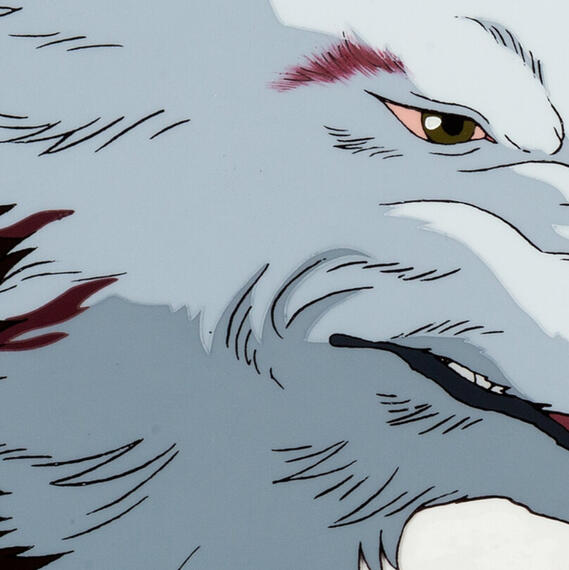Gomgrut's Cel Creation Guide

This is an in depth guide to making your own hand inked and hand painted animation cels.This is how I currently make my cels and what I’ve learned so far!This site is still a very heavy WIP and will be gradually updated.Brought to you by Celby! Made by GomgrutIf you make a cel I'd love to see it!!!!!!
How are cels made?
Animation cels are made using inks and paints on cellulose acetate sheets. First make a sketch, lay the acetate sheet over it and ink the lines. Once that’s dry, flip the sheet and paint in the colours.A simple process in theory, but it can be tedious and complex when in practice.Each step in this guide is filled with information and tips to help you along the way. They’re super fun and rewarding to create, so I hope you enjoy making yours!

Planning
Before I get started, I like to gather inspiration for a cel! There’s so much to think about before hand - style, colours, complexity, shading, characters, poses, etc etc.The more colours you have, the longer this cel will take. The more details in the drawing, the more careful you need to be with painting. If it’s your first time, I suggest sticking with something simple and just have some fun with it!
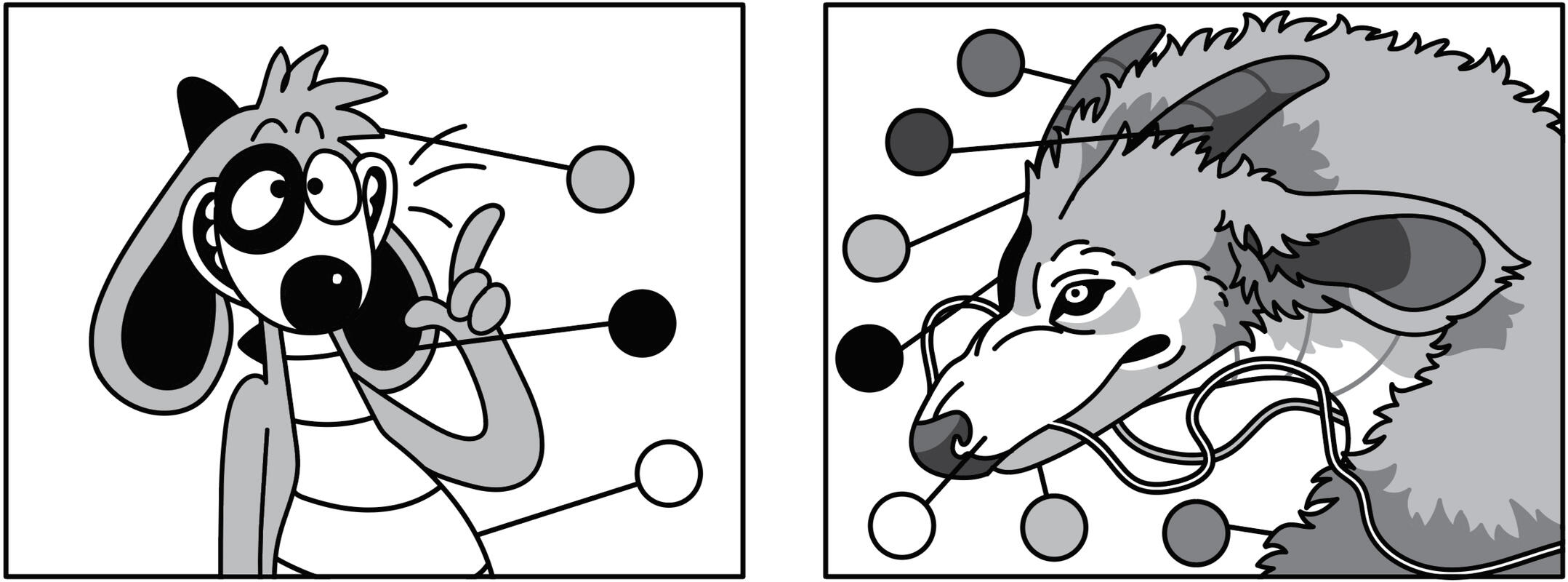
For example, the drawing on the left will require black lines and 3 paint colours. Whereas the one on the right will not only need black lines, but about 4 different line colours, and 7 paint colours.You can run into limitations while you’re making a cel. For one, you cannot have gradients or transparent colours (unless you have an airbrush) and you may need to simplify character designs.Places like Ebay, Yahoo Japan and Heritage Auctions are great places to look at existing cels. You can find heaps of fun poses and unique ideas from the most random of cels. Otherwise, now is a perfect time to use this as an excuse to watch some of your favourite animated shows for inspiration. Maybe you just want to copy a frame from a show, or draw your characters in the same style.If you want to add more complexity or “authenticity” to a piece, you can use multiple acetate sheets. Characters can overlap each other, the foreground can cover a scene, an effect like an explosion might be behind a character, or an arm could be moving while the rest of the character stays static.This is just another thing you can play around with!

Concept

I complete piece of artwork digitally, so I have a good visual reference while I’m inking and painting. Your’s could be much looser and sketchy, and doesn't have to be digital! I just like mine to be clean and refined, as I still somehow manage to paint colours in the completely wrong spot if it isn’t.I find it best to at least sketch the background while you’re drawing out characters so they fit into the world well. You can design the background after, but they may look a little awkward! I usually render my background after I’ve coloured my characters, so I can avoid using colours that cause them to blend in.For lineart, you can have all black lines or coloured lines. When you have areas of colour that aren't contained by black lines, such as shadows, markings, or effects, you need to outline these with the same colour. Otherwise, you won’t know where the edges of these colours are when painting.
Again, this is all up to you! Cel animation had both all black and coloured lines depending on budget and style, as coloured lines make a lot more work.
Coloured lines
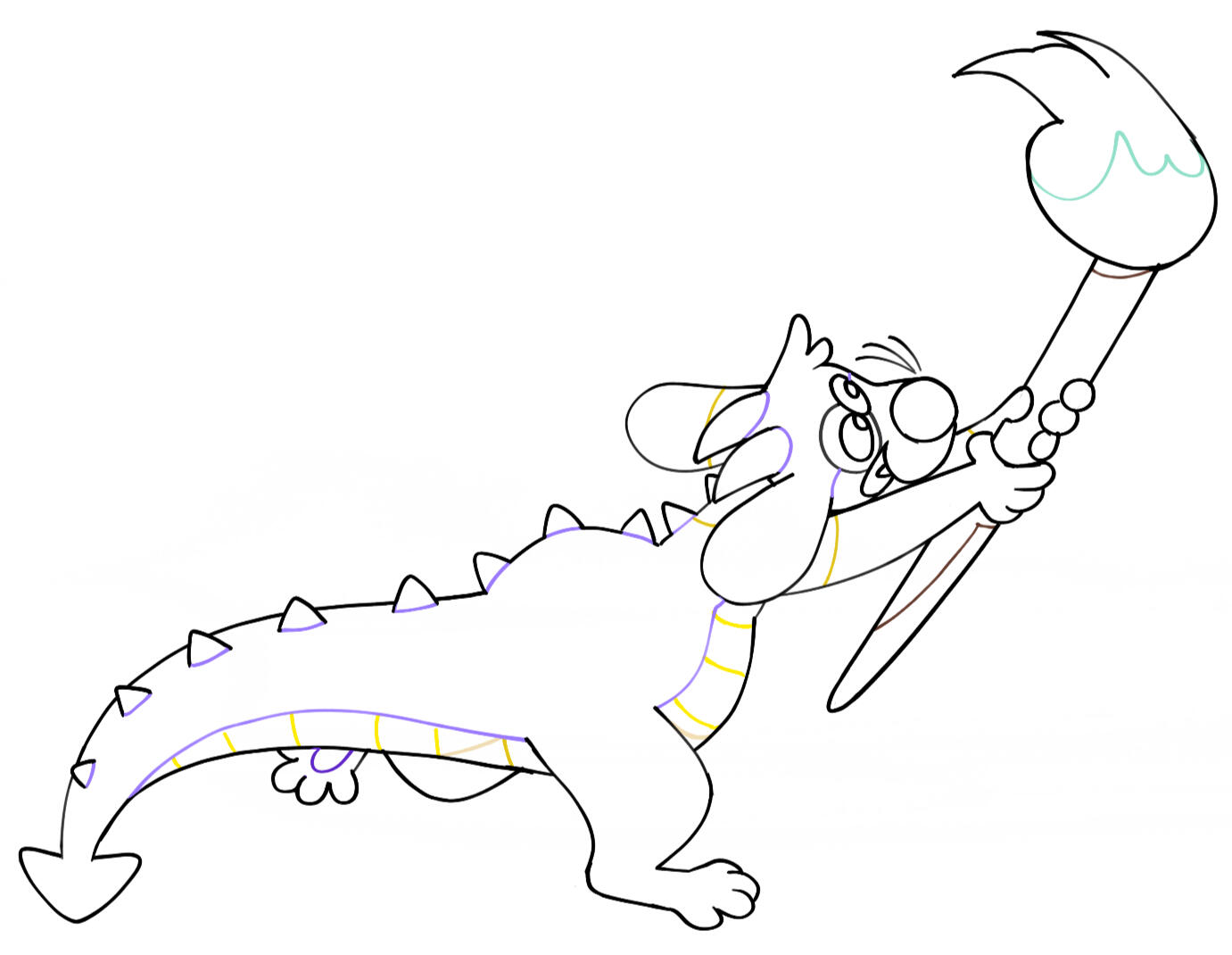

Black lines
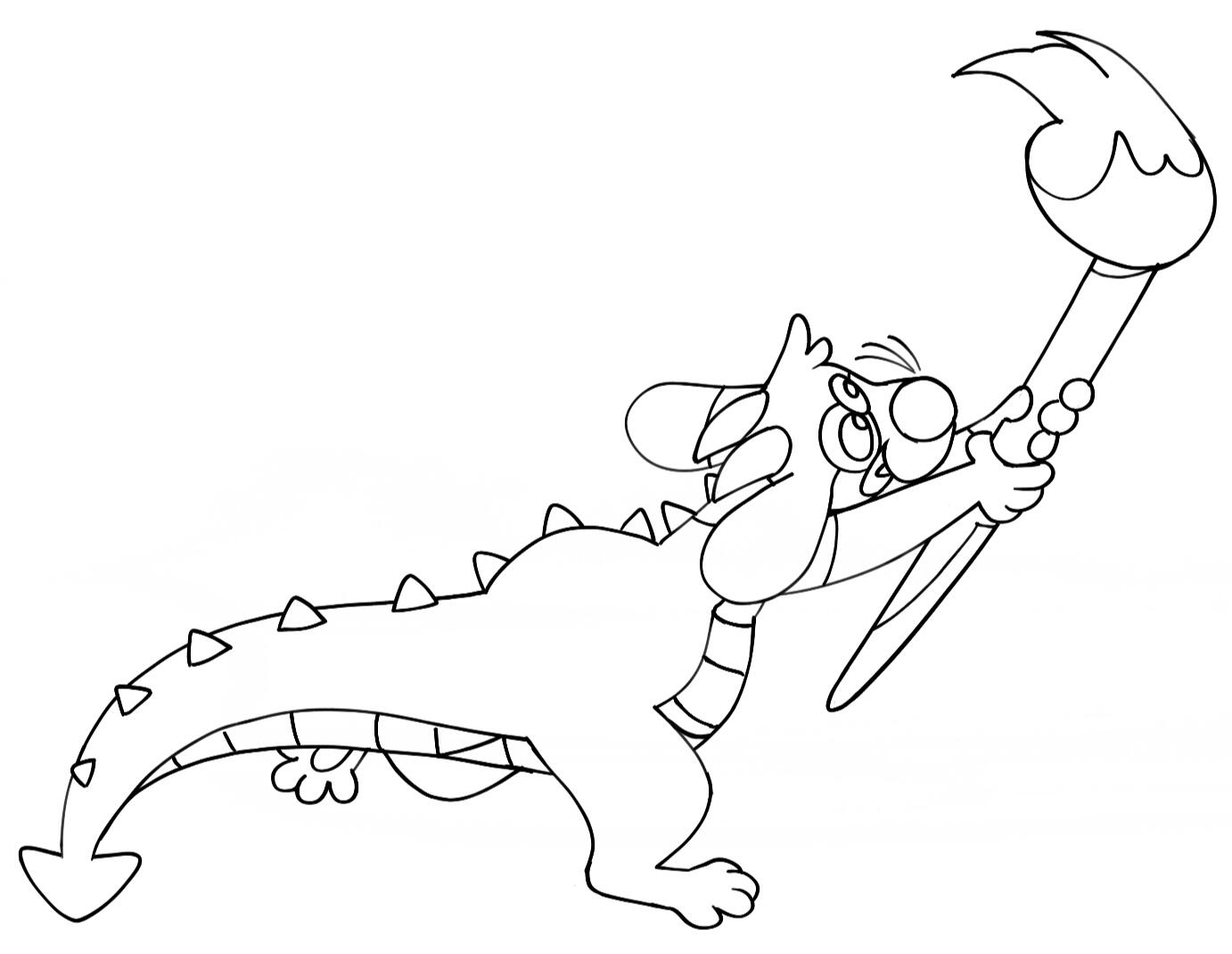

After everything is done, get ready to print out the lines for inking. If there are coloured lines, change them to bold, obvious colours such as red, green, or blue, to help differentiate between them once they’re on paper.Include a border of the entire cel so you know exactly where your characters will be placed on the acetate sheet. Lower the opacity of these lines to about 20% (so it's easier to ink over) and print it out.

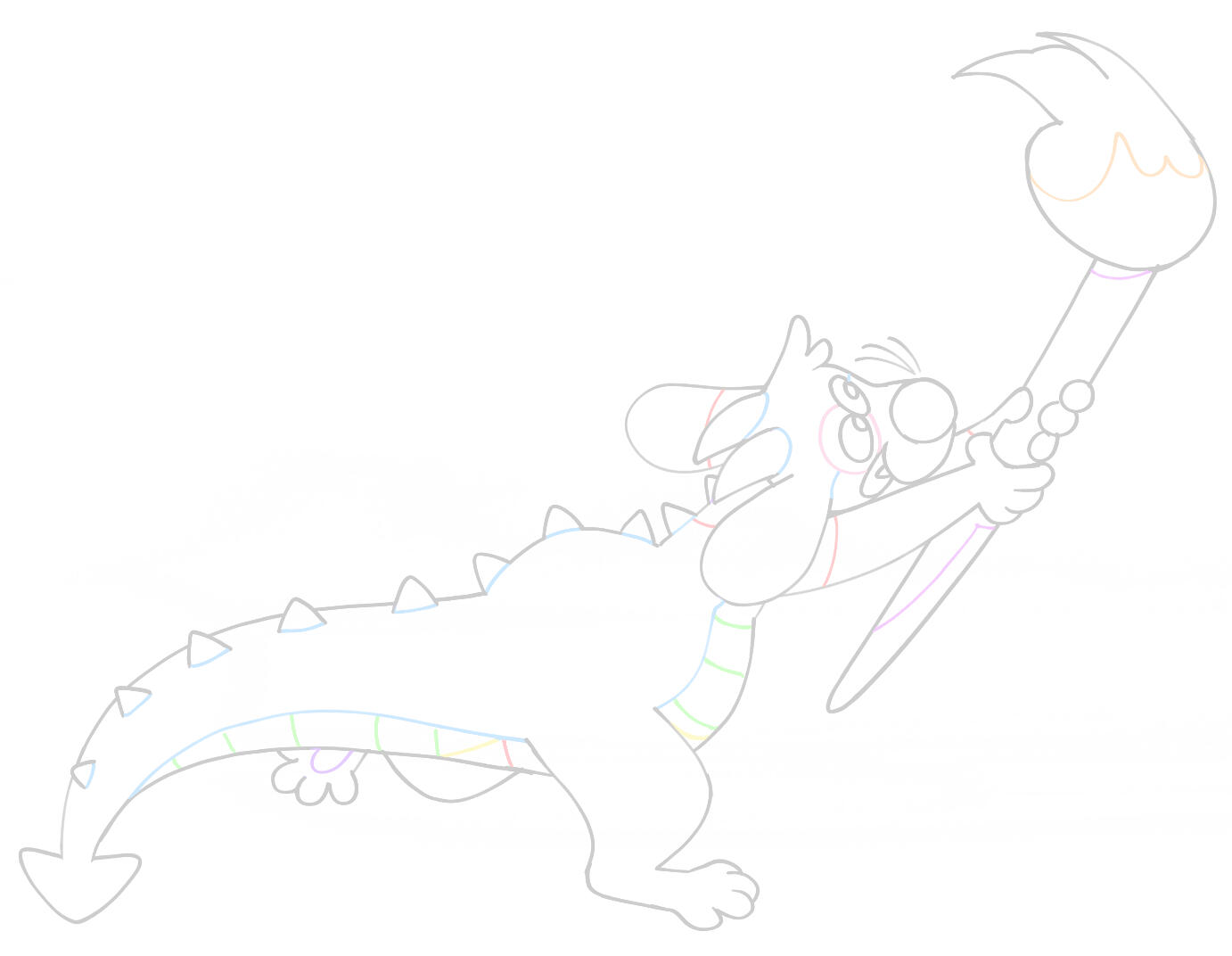
Tape the print to the acetate sheet using washi tape. Other tapes will leave a sticky residue behind! Have the printed side face the sheet as you’ll be tracing over it.IMAGE:
(Paper/cel setup)
I prefer to work at around an A5 size, so I cut both the acetate sheet and the print using a paper guillotine.

Inking
Before you start inking, wipe the sheet down with water and a microfiber cloth. If there are fingerprints left on the sheet, the ink will bead around them and will ruin your lines.IMAGE:
(finger prints vs no prints ink)Fluff and dust can also get stuck on the nib, which will either ruin the line or clog the nib.You can wear cotton gloves to avoid putting fingerprints back onto the cel after cleaning. I like to use a glove with no index or middle finger for my inking hand!I'm still new to inking, so I don't have much helpful information on how to actually use dip pens!! I recommend watching some tutorials/process videos.You must use india ink, as other inks will bead up on the page and will not dry.It's a good idea to have a bit of scrap paper to scribble on after dipping your pen. I use this paper often because sometimes the ink will flow too heavily and other times not at all (if there’s a blockage). Doing this helps to avoid line errors!Ink from left to right or let certain areas dry first to avoid smudging your lines.I use one nib for both black ink and colours. However, if you're using a thicker paint, you may need to use a large size nib to help it flow.Take a look at these examples of cels. You can see the lines that define the edge of colours.
Not all cel animations had coloured lines, and instead just used black, probably due to budget constraints.
The only actual coloured ink I have is white. All other ink colours are made by thinning the paint used for filling in colours. This is so both line and painted areas have matching colours.With each paint colour I use, I have two variations: one for the paint and the other for the ink.
You’ll have to test each custom ink until you get it to a good consistency. If it’s still too thick it won't flow down the nib, but if it's thinned too much it'll make the ink transparent.
I’ve found that these inks don’t flow well from smaller nibs, so use a larger nib for these.There's two ways to ink your cel:
Ink the black lines first, and then the colours OR colours first and then black.
Inking with black last will give a cleaner finish, but requires you to mix every colour you will be using, store the mixed paints so they don't dry out, and wait for all the lines to dry.I personally like to ink with black first as it's less time consuming, easier and less of a hassle! You'll probably be the only person to notice that the finish isn't 100% perfect!When choosing which colour to use for a line, the darkest one is the best choice. For example, using the shadow colour instead of the base colour will give a better result. I've find that using the lighter colour makes a line stand out more.IMAGE:
(Dark colour line / light colour line)There may be a very slight colour difference between the coloured lines and the paint, even if you use the exact same paint colour for both. This is because the sheet isn’t 100% clear. There may also be a small shadow cast from the line depending on how thick the sheet is!Make sure to wait until your inks are dry so that they don't get ruined/smudged when you flip the cel.If you make a mistake while inking, worry not, it's an easy fix!
For smudges, use a wet cotton bud and clean up the moment you do as it will be easier to remove. For lines you don't like, wait for them to dry a little bit and then use the wet cotton bud. This will prevent smudging it further and instead remove the ink in chunks.
Once you've removed a line, there'll be a mark from where the nib of the pen has scratched the sheet. If you're inking over this again anyway it's no worry. It'll be hard to see even if you don't, but too many of these scratches may become obvious.IMAGE:
(Ink mistake/removal)

